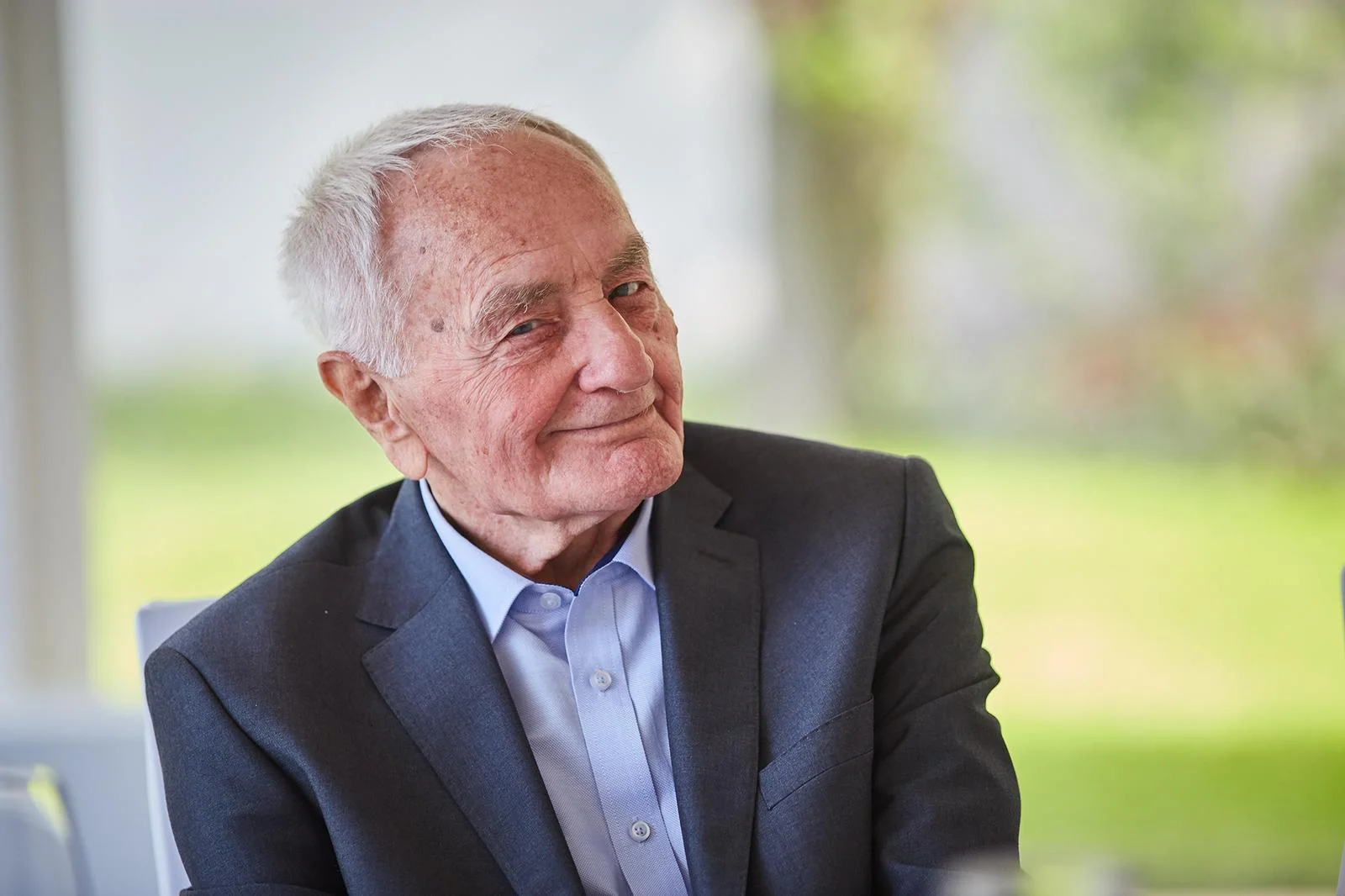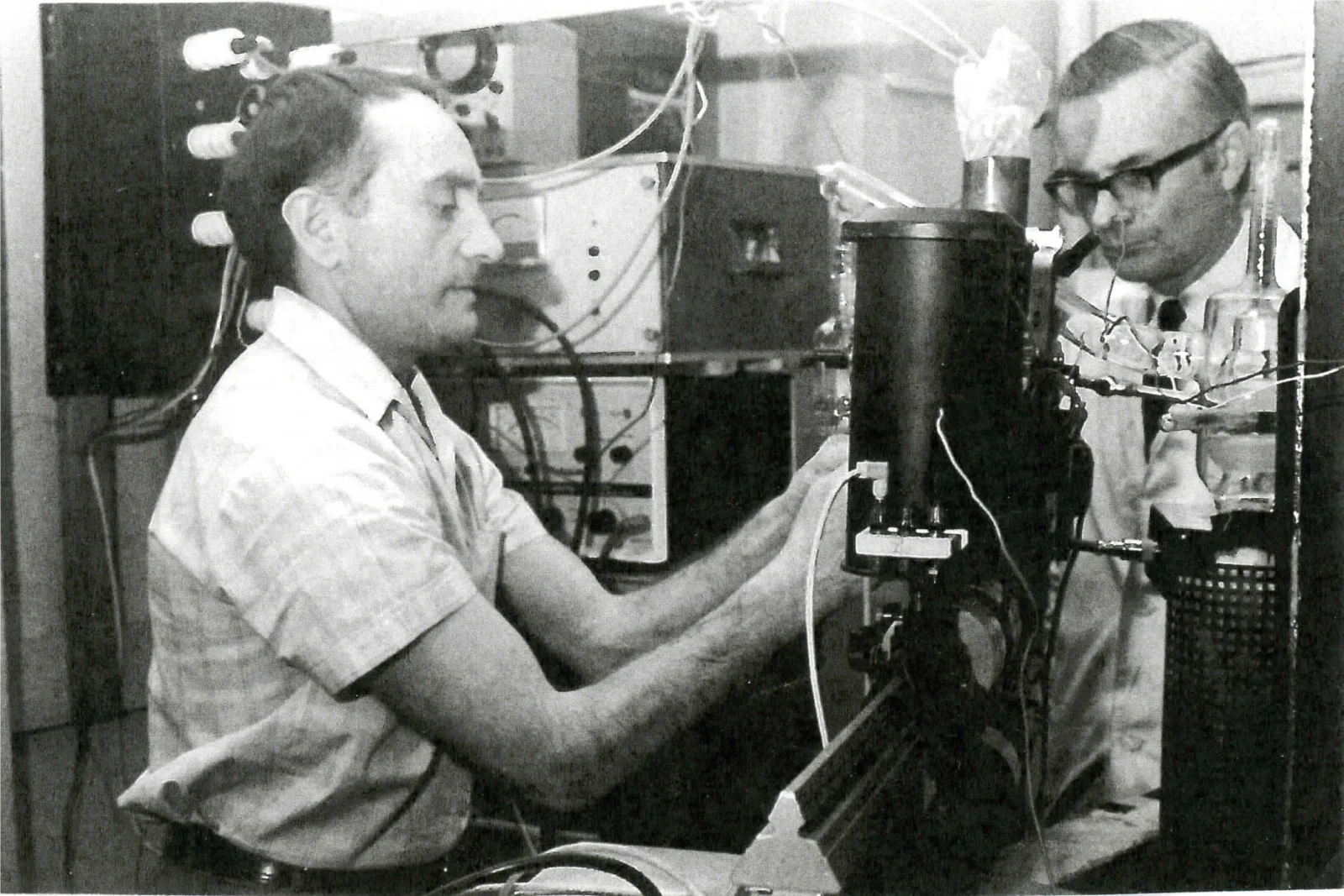
Dr hab. Tadeusz Radoń – Reminiscence
Dr hab. Tadeusz Radoń (1929–2025), associate professor, was one of the fifteen students of the founder of the Wrocław school of surface physics – prof. dr hab. Jan Niklibowiec. Together with professor Niklibowiec’s students – professor Ryszard Męclewski and professor Zbigniew Sidorski – he contributed to the creation of one of the world’s most important field emission centers.
Tadeusz Radoń was born in 1929 in Dylągowa (a village in the Subcarpathian region). His childhood and youth coincided with the difficult war and post-war period. He attended primary school and junior high school in Dynów. He continued his education, after the resettlement of his family to the Western Territories, in Oleśnica, and later he took on studies at the University of Wrocław. He associated his professional life with the Institute of Experimental Physics of the same University. His first scientific publication was on the adsorption of germanium on tungsten and was published in 1963. In 1967, mgr Tadeusz Radoń, defended his doctoral dissertation. In the years 1972–1984 he cooperated with the group of prof. Christian Kleint (photo below) – the precursor of the method of studying photopole emission – from the University of Leipzig. A significant achievement of this cooperation was the obtaining of experimental results reflecting theoretical calculations of the band structure of the studied metals. In the band structure, prof. Radoń’s group found optical transitions that were measured simultaneously from many crystallographic directions of the field emitter. As part of the cooperation with Leipzig, the first measurements were made from individual microcrystal walls. On the basis of these measurements and their comparison with theoretical calculations, 11 optical transitions obtained from the direction of <111> tungsten were revealed. These results fit well with the state of knowledge about the band structure above and below the Fermi level at the time.
In 1981, dr Tadeusz Radoń defended his habilitation dissertation, which was then awarded the minister’s award. In the years 1981–1984 he was the deputy director of the Institute of Experimental Physics for didactic matters. In the years 1984–1987 he was the Deputy Dean of the Faculty of Mathematics, Physics and Chemistry of the University of Wrocław. In the years 1987–1991 he was the Deputy Director of the Institute of Experimental Physics for general affairs. From 1985, he led the Department of Field Emission Spectroscopy, which was separated from the Department of General Physics headed by prof. Zbigniew Sidorski. The Department of Field Emission Spectroscopy included employees who were connected by a research method using field emission of electrons to study adsorption, diffusion and energy of electrons. Initially, the composition of this Department consisted of dr Jan Żebrowski, dr Józef Wysocki, dr Czesław Workowski and – as a scientific and technical employee – mgr Stanisław Jaskółka. In April 1993, Tadeusz Radoń took the position of associate professor.
After 1995, prof. Radoń became interested in the influence of temperature and residual gases on photopole emission. His work in this area allowed for accurate interpretation of the results and evaluation of vacuum conditions. He conducted research on the properties of titanium, an element with wide technological applications, in particular showing a high ability to absorb gases. The titanium crystal grown on a tungsten field emitter. These studies were conducted together with a doctoral student Piotr Hądzl, who in 2000 defended his doctoral dissertation entitled “Przejścia optyczne w strukturze objętościowej (0001) tytanu. Gęstość stanów powierzchniowych na ściance (0001) tytanu” (eng. Optical transitions in the volume structure (0001) of titanium. Density of surface states on the wall (0001) of titanium). As part of this research, the energy of surface states was determined that was in good agreement with theoretical calculations. A similar agreement was also obtained for the tantalum crystal. Prof. Radoń and his colleagues explained the fluctuations in the photopole emission current observed since 1973 as a size effect. He dealt with this topic for a long time. His last paper, published in 2010 in Acta Physica Polonica A, entitled “Size effect in photofield emission”, dealt with this issue. An important achievement of prof. Radoń’s research group was the reduction of the thermocurrent accompanying photoemission by illuminating the sample with intermittent laser light. Increasing the frequency of lighting interruption reduced the noise level of the photocurrent, which made it possible to determine surface states below the Fermi level. Showing it experimentally was a significant scientific achievement.
Tadeusz Radoń worked at the Institute of Experimental Physics of the University of Wrocław until 2000. Retirement did not end his scientific activity. He published his last scientific work in 2010. He was the author of a total of 44 scientific publications. He was awarded the Gold Cross of Merit, the Knight’s Cross of the Order of Polonia Restituta, the Medal of the Commission of National Education and the Medal of the University of Wrocław. His contribution to the development of Polish science will not be forgotten.
Professor Radoń loved contact with nature, which he contemplated during mountain trips. He was interested in ornithology, as well as classical music – he often visited the opera or philharmonic. He will be remembered by his colleagues and students not only as an outstanding scientist, but also as a person full of optimism, always cheerful, willing to talk and help.

The text was prepared by dr hab. Grażyna Antczak on the basis of:
- Markowski L. (ed.), 2019, 50 lat Instytutu Fizyki Doświadczalnej Uniwersytetu Wrocławskiego 1969-2019. Księga jubileuszowa. Oficyna Wydawnicza ATUT, Wrocław.
- Galasiewicz Z.M. (ed.), 1995, Fizyka wrocławska 1945–1995. Oficyna Wydawnicza Politechniki Wrocławskiej, Wrocław.
- Memories of the family of professor Tadeusz Radoń
Date of publication: 31.01.2025
Added by: M.J.
Translated by Szymon Pachurka (student of English Studies at the University of Wrocław) as part of the translation practice.



